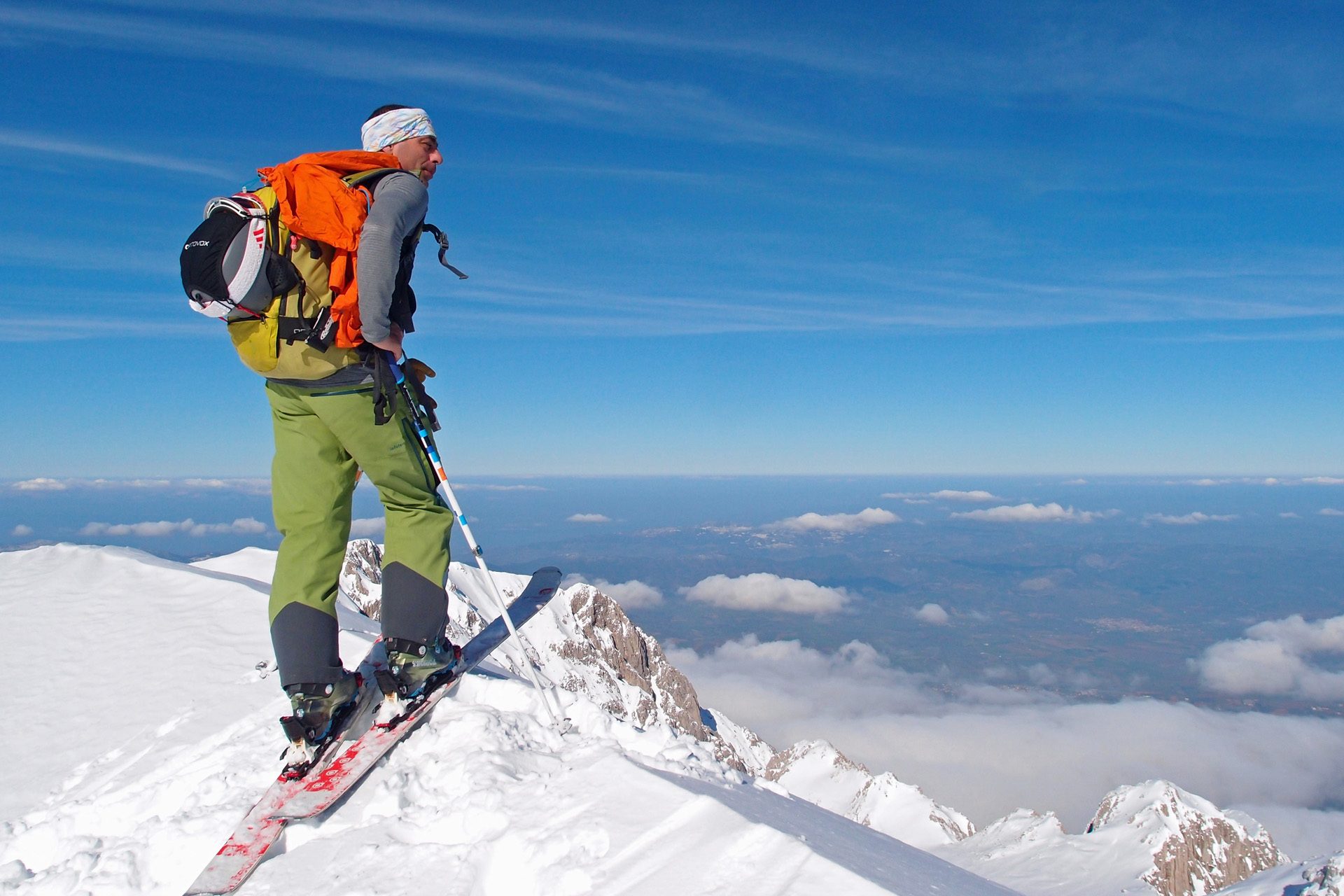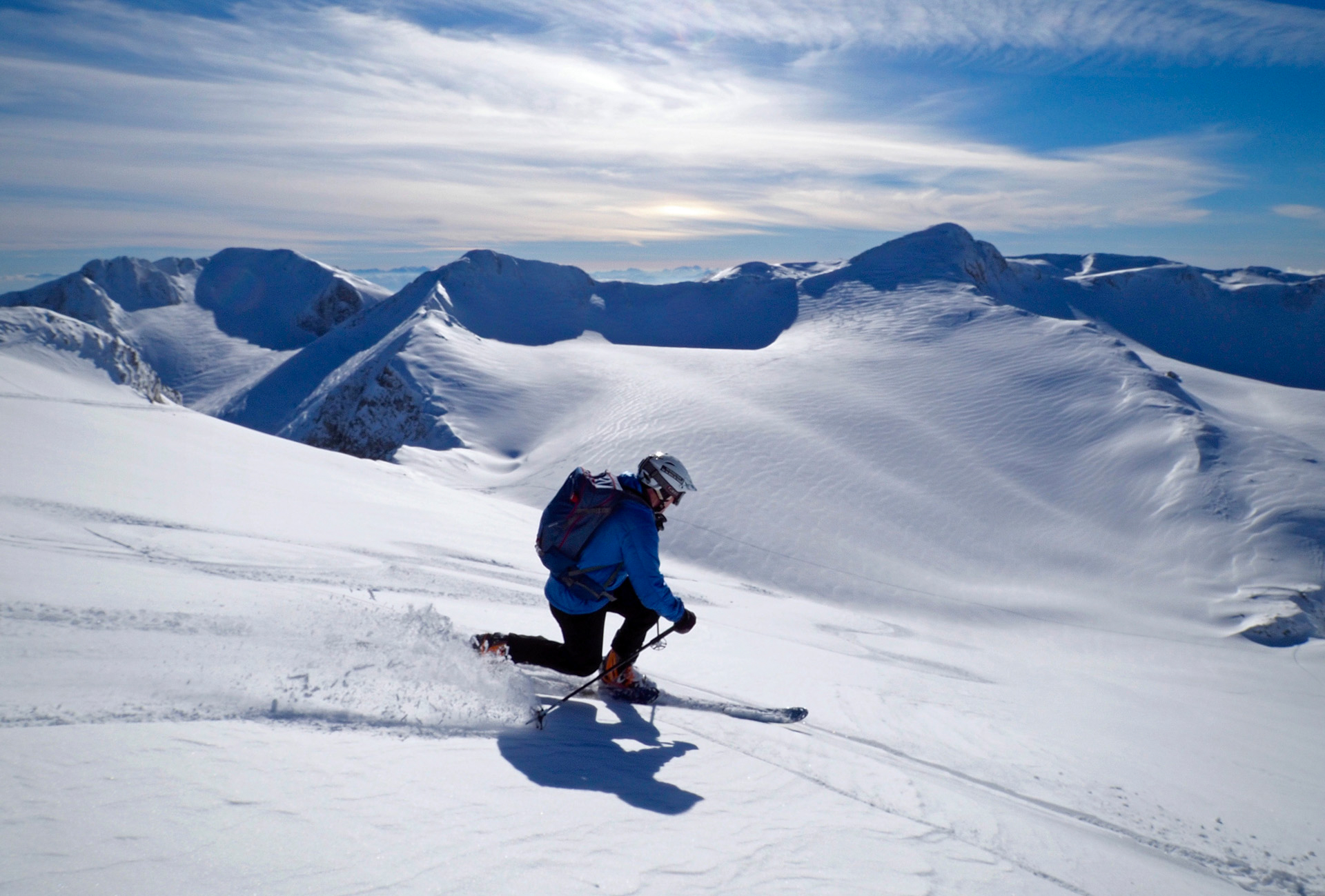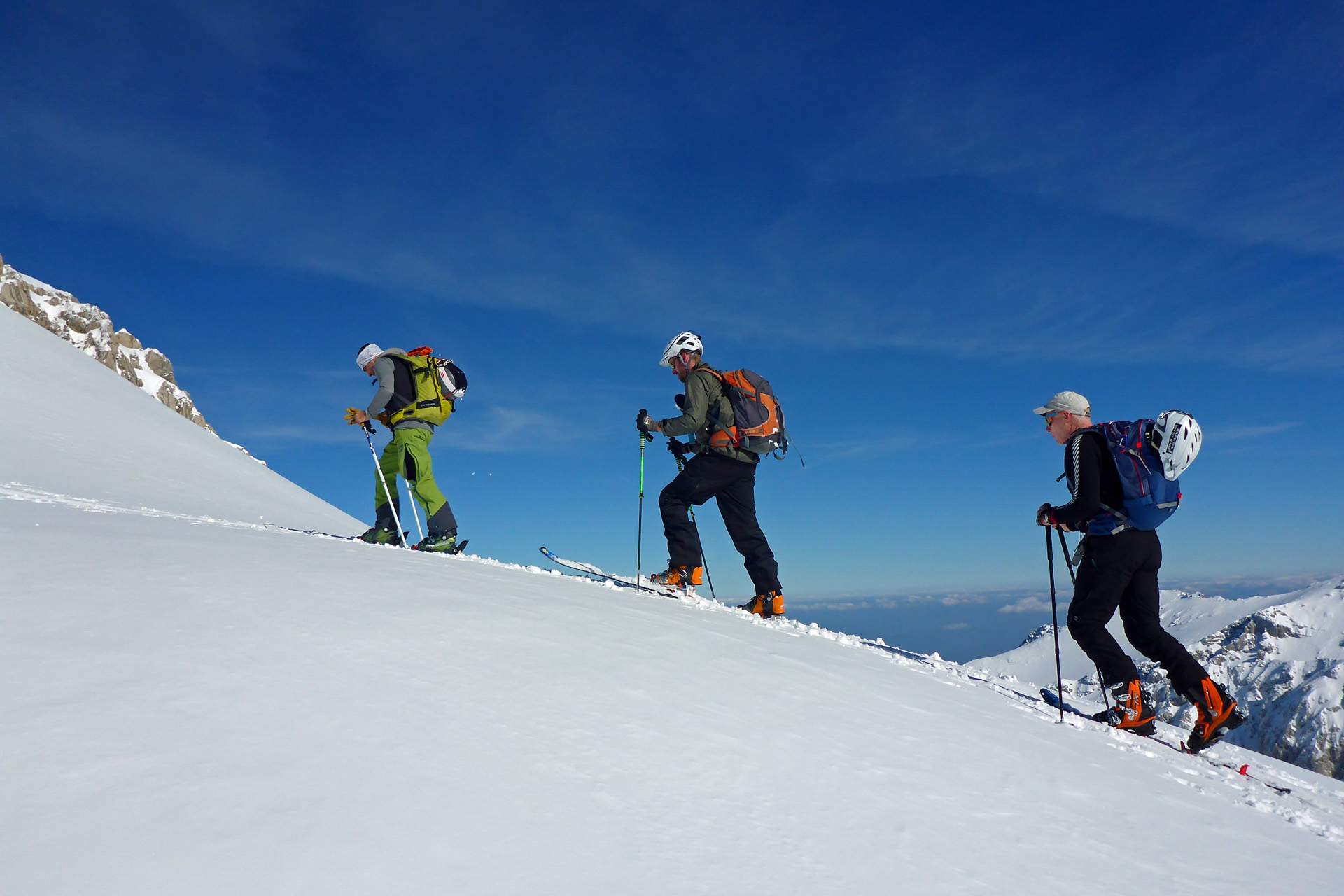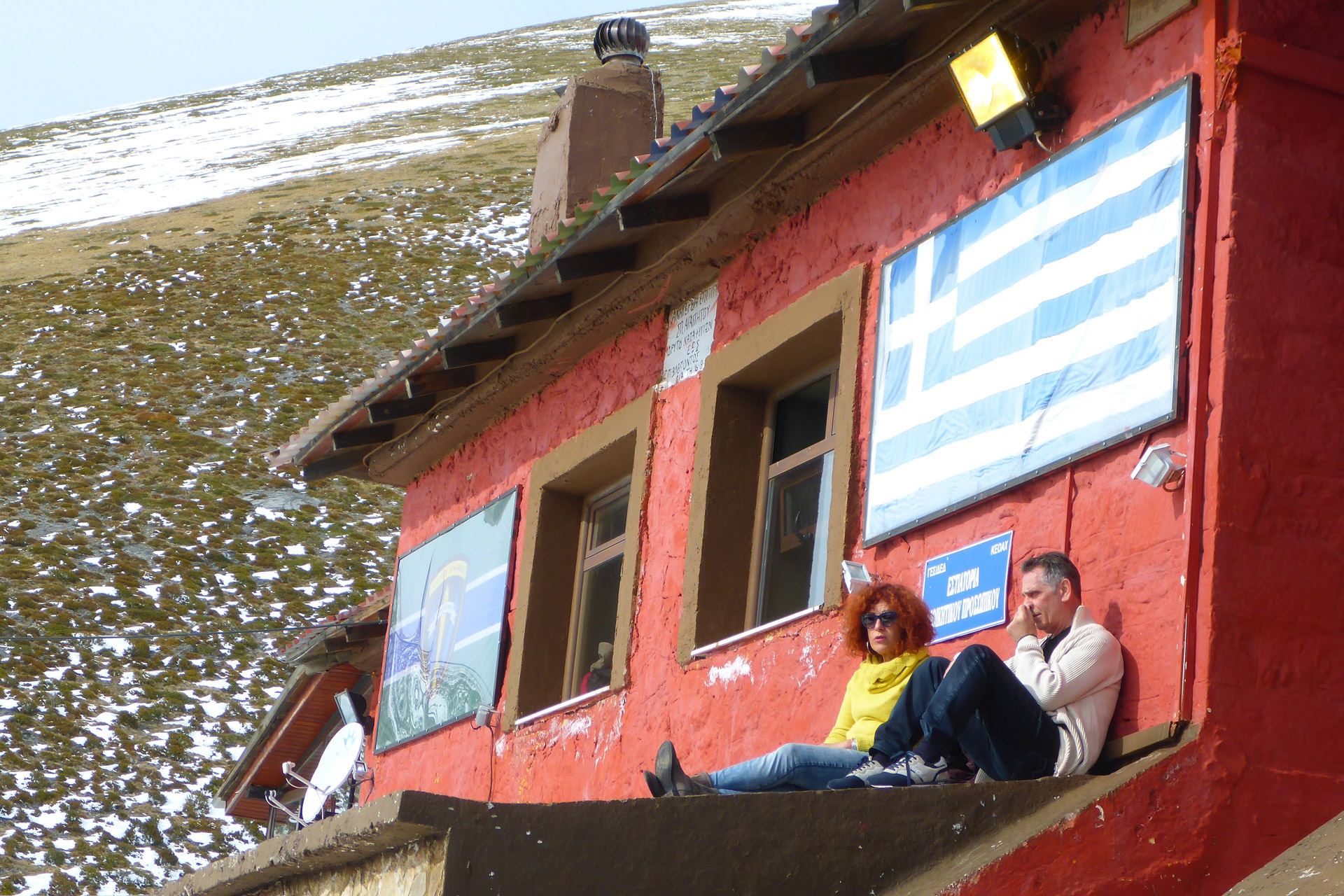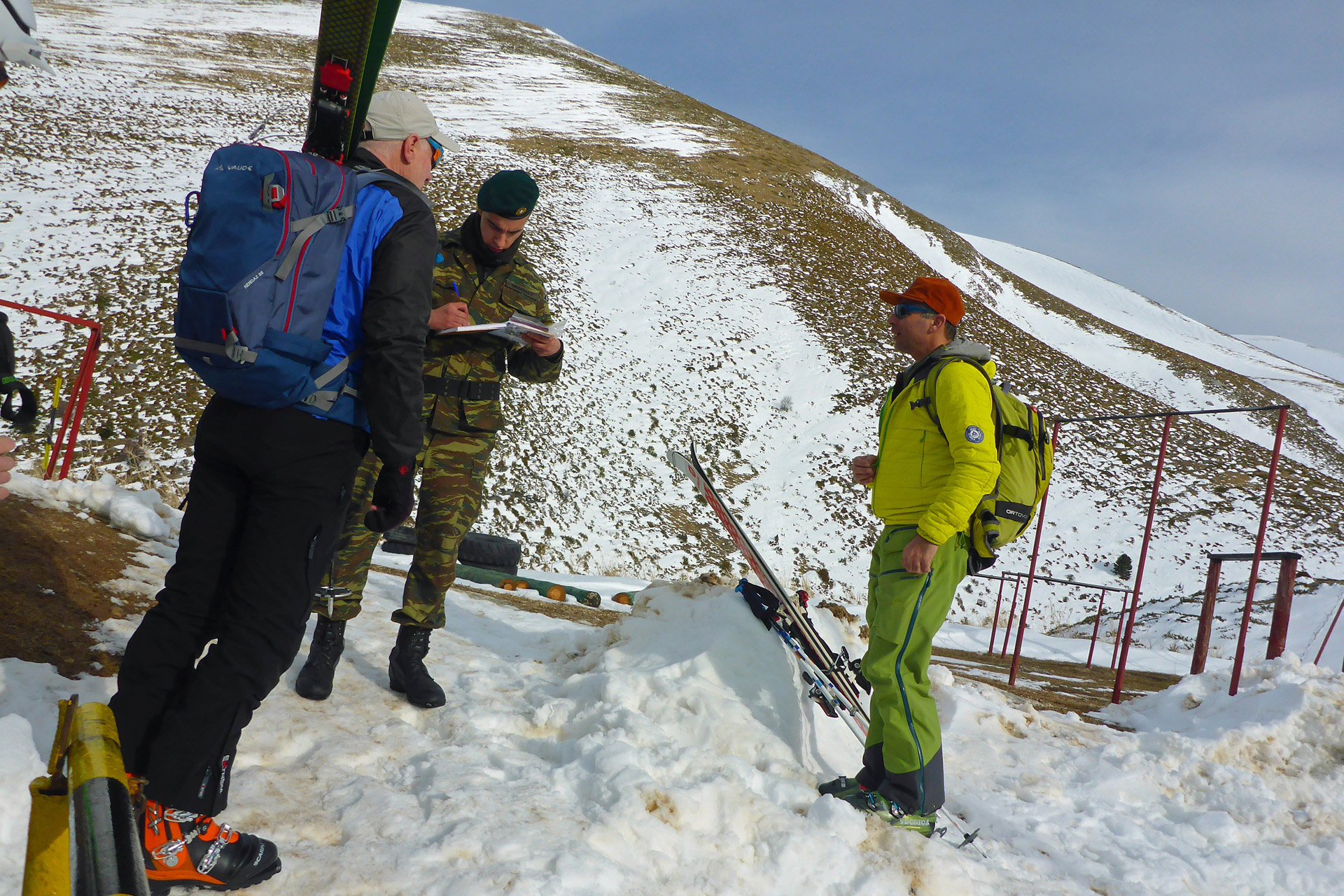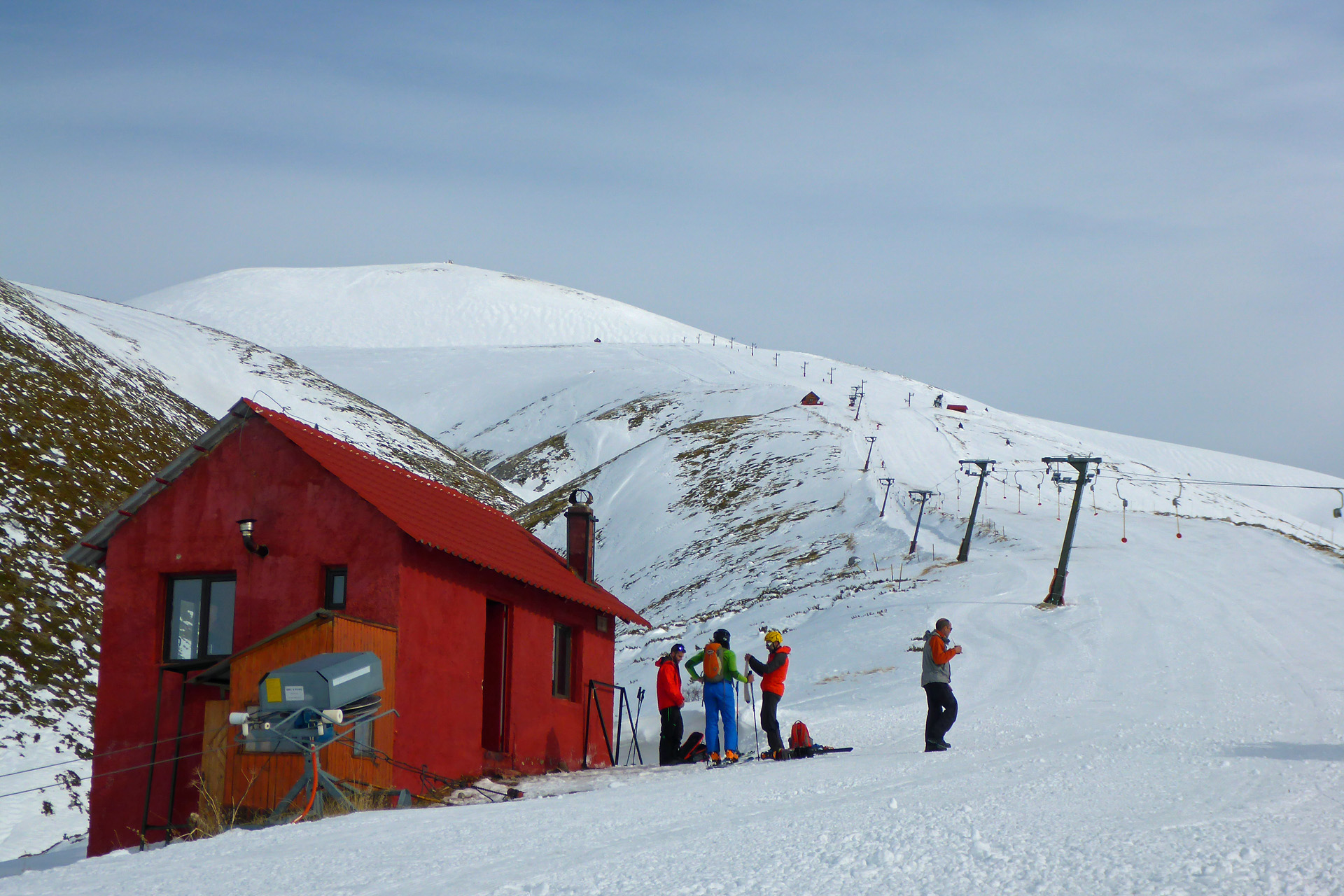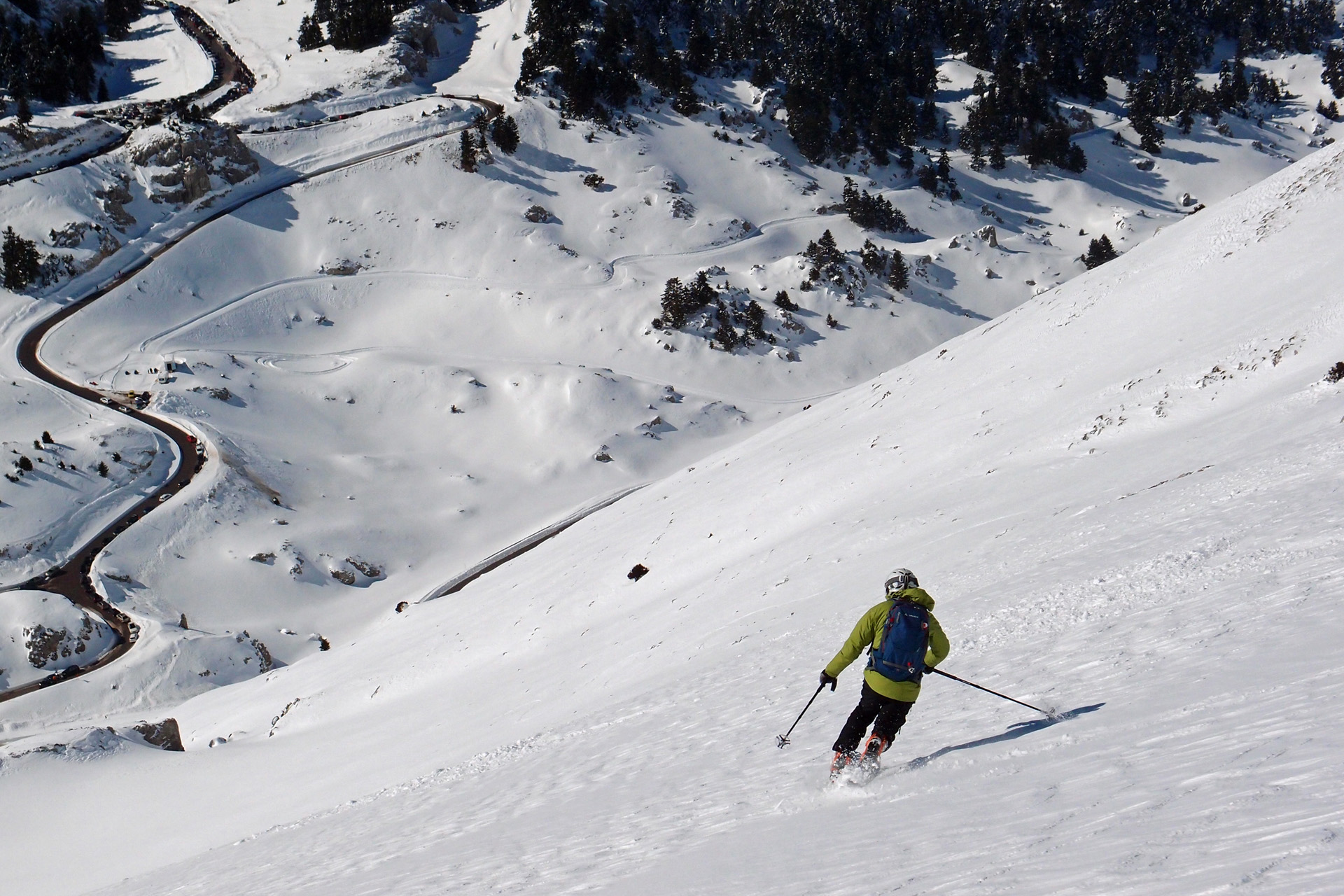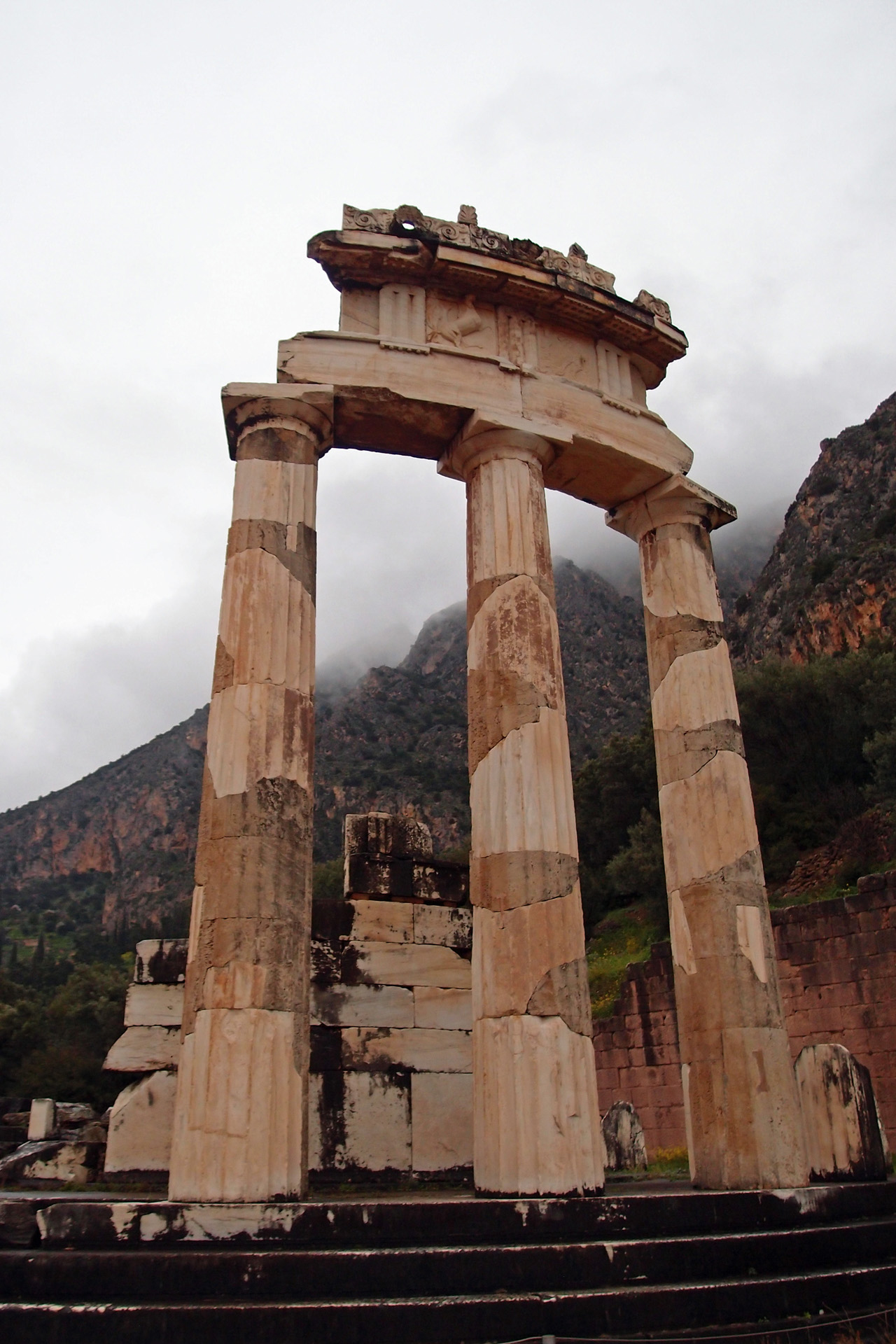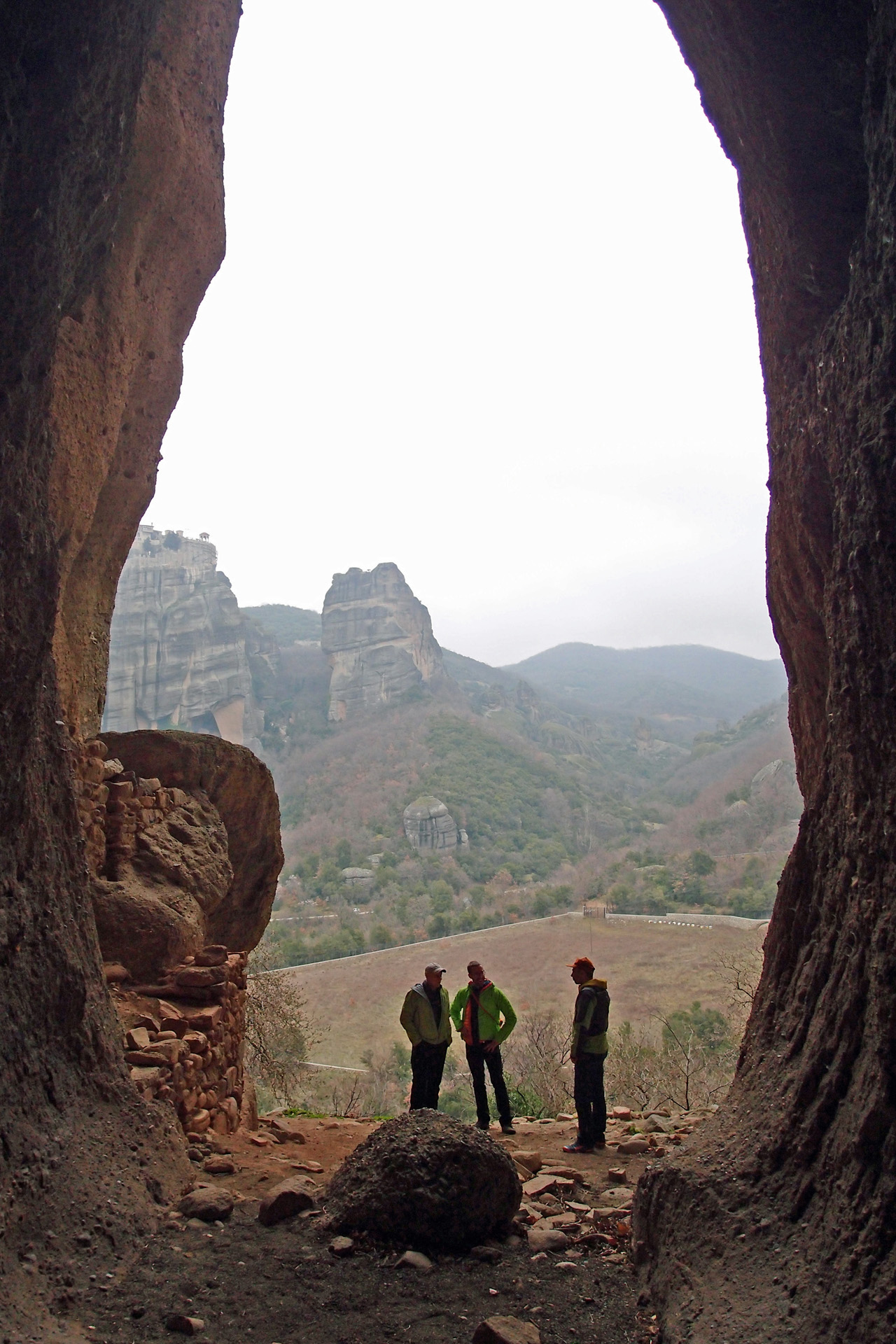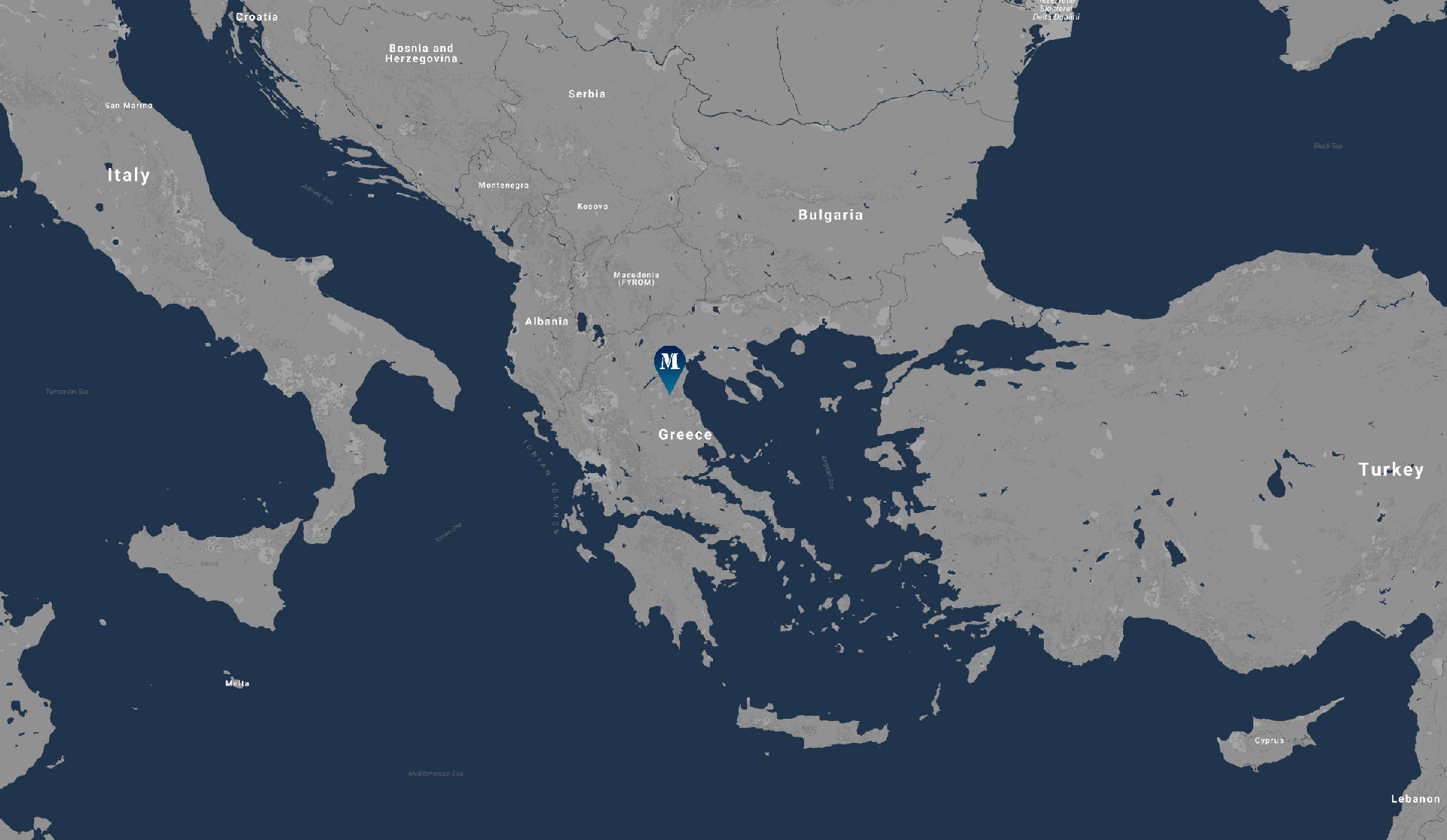Words by Judy Armstrong | Main image by Sam Morris
“You are doing what?” our friends ask in unison. “Going skiing? In Greece?”
“Ah,” we reply smugly. “For the last five winters, Greece had better snow than the French alps. It’s the most mountainous country in Europe. The powder record is amazing. Honestly, it’s a dead cert…”
This was October and we were dreaming of skiing. There had too many rubbish winters trying to scrape together snow adventures, so we are thinking laterally. Online, I find Nikos Hadjis, Greece’s only UIAGM-certified mountain guide, and book him for a telemark ski mountaineering adventure for me, Duncan and our mountain bike guide friend Sam.
What could possibly go wrong?
In December, the jet stream gets involved. Snow dumps in record quantities on the northern European Alps and the webcams from Greece’s ski resorts show, well, grass. Sometimes rain, but mostly grass. A week before we are due to fly to Athens, in February, we talk with Nikos. He has plans; there is no need to worry, but we might like to bring our rock climbing shoes. Undaunted, we pack for snow.
As we fly from Manchester to Athens, Europe opens below us, sharp and white. There is snow everywhere, from the high peaks to the low valleys. As we near Greece, everything changes, to green-gray terrain pocked with blue bits of water. We see mountains, but they’re as dry as a camel’s mouth.
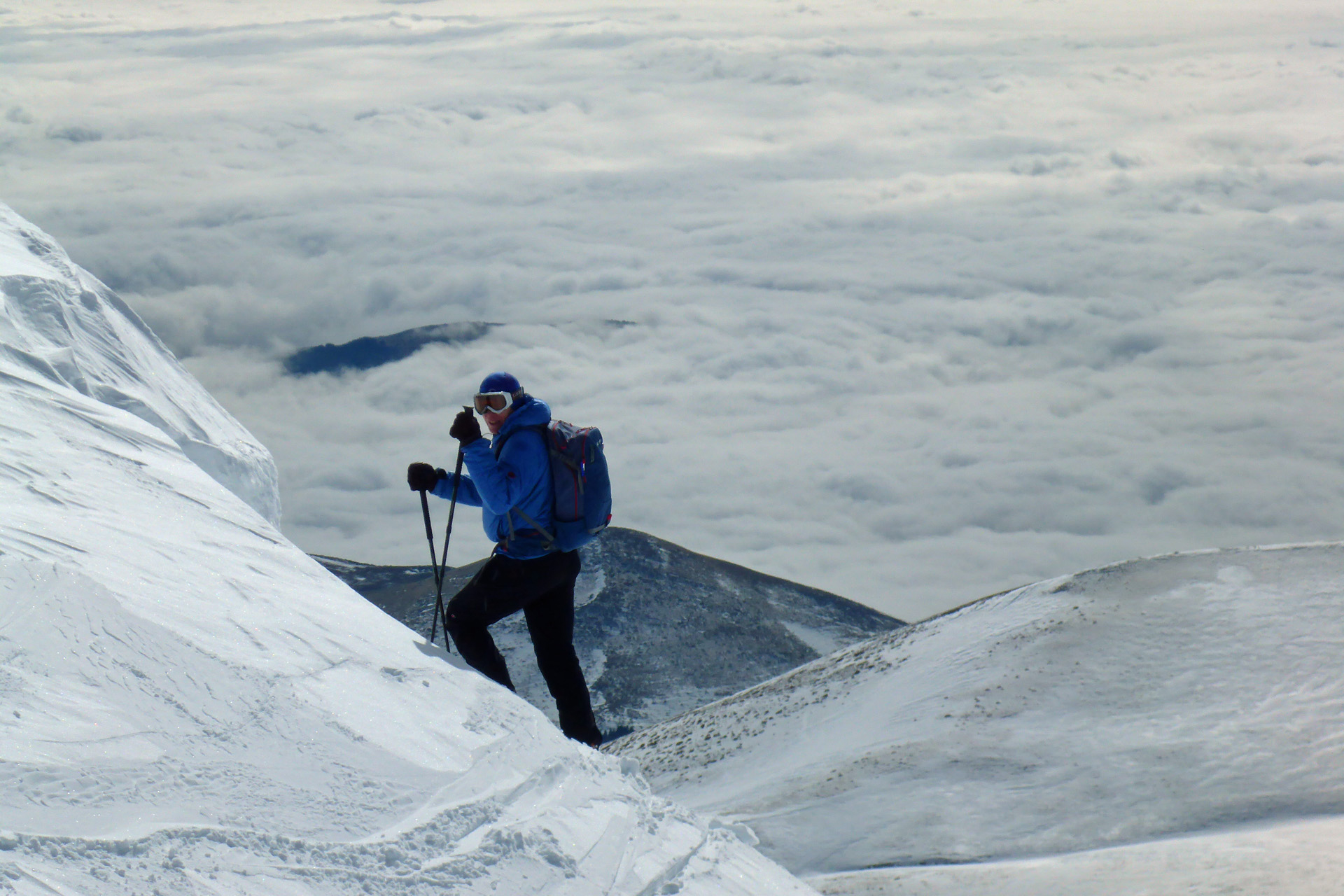
On the plus side, it’s easy to find our luggage at Athens airport. Ours is the only ski bag on the carousel.
It’s t-shirt weather outside, and Nikos greets us as warmly as the sunshine. We decide to take a relaxed approach to this ski holiday: this will be a Greek adventure and snow is a bonus.
We drive north west for two hours, over land covered with concrete, then olive groves, then low hills. Our destination is Amfikleia, a town on the north side of Parnassos. It spreads up the side of the mountain, with steep, narrow streets, random water sources and a small church with an intricate bell tower.
“Snow seems a remote concept, so imagine our surprise when we wake to find the stuff dumping around us”
Excited to be here, we check into our guesthouse and wander into town. Despite the recent economic crisis, the bars and coffee shops are full as Greeks settle in to chat, drink and smoke. The smoking is an eye-opener: as Sam says, “It smells like the 1980s…”
As we stagger home under a clear sky, after a night of tzatziki, fire-grilled lamb chops, oil-drizzled feta, fat olives, and Alfa Hellenic Beer in a local restaurant, snow seems a remote concept. So imagine our surprise when we wake to find the stuff dumping around us: the view has vanished and our world is white.


